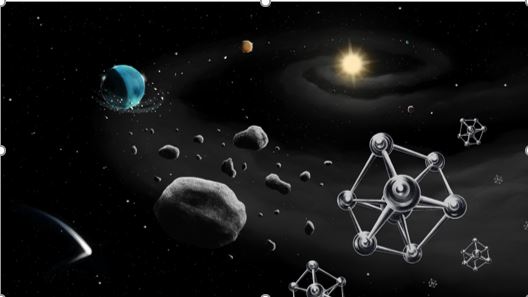EXACT AND NATURAL SCIENCES
A new study links the chemical composition of rocky exoplanets with their host stars
The find, which was published in Science, was conducted by an international research team that comprises experts of CONICET and the ‘Astronomical Observatory of Córdoba.’
Recently formed stars are surrounded by a circumstellar disk of gas and dust, known as a protoplanetary disk. A fraction of dust found in this disk condenses to form the rocks that make up telluric planets (or also called rocky or terrestrial planets that are made up of silicates and metals), while the rest of the material eventually falls on the star. Considering the common origin of this material, it is generally assumed that in planetary structure models the composition of rocky planets is similar to the chemical composition of orbiting stars.
Nevertheless, there was no direct observational evidence of a connection between the chemical composition of stars and that of their terrestrial planets so far. The only reference was our Solar System, where it is known that the abundance of the main elements that constitute rocks (such as magnesium, silicon and iron) of the telluric planets (except for Mercury) is similar to that of the Sun.
In a recent study published in Science, a research team presented an observational correlation between the chemical composition of rocky exoplanets and the composition of their host stars for the first time. Led by experts of the Instituto de Astrofísica e Ciências do Espaço (Portugal), the research work was done by an international team of astronomers in which EmilianoJofré and RominaPetrucci, both CONICET researchers at the ObservatorioAstronómico of the Universidad Nacional de Córdoba (OAC, UNC), participated.
For this study, the team selected a sample of 21 rocky exoplanets that have high-precision mass and radius measurements to determine their iron densities and amounts. Then, the chemical composition of the stars that host these planets was determined and the abundance of the main elements that make up rocks in protoplanetary disks (magnesium, silicon and iron) was deduced. The scientists used high-resolution spectra obtained with state-of-the-art instruments mounted at large astronomical observatories around the world, such as Mauna Kea, La Silla, Paranal andRoque de los Muchachos. “For this part of the work, it was important the data obtained with Argentine time in the 8.1 meter telescope and the CRACES spectrograph of the Gemini observatory,” Jofré comments.
The team also discovered that the relationship between stellar and planetary composition is not as simple (one-to-one), as it has been assumed so far in planetary interior models. The analysis of the data revealed that the iron content of rocky planets –obtained from planetary density measurements- is higher than that obtained from the composition of protoplanetary disks derived from analysis of host stars. The researchers interpret that this iron enrichment of rocky exoplanets could be attributed to the chemistry of protoplanetary disks and the peculiarities of planetary formation process.
“Several previous studies looked for a relationship between the composition of flow-mass terrestrial exoplanets and that of their host stars. However, these studies were based on the analysis of individual planetary systems or very small samples. For this reason, none of them found a strong correlation such as the one we have obtained in our research work.
Knowing the composition of a rocky planet is key to knowing if it can have oceans or even an atmosphere. Then, based on that information, we can analyze its potential habitability.”
Knowing the composition of a rocky planet is crucial to knowing if it can have oceans or even an atmosphere. Considering that, we can analyze its potential habitability. “Deriving the composition of these types of planets, however, is not always possible because their mass cannot be determined sometimes. The results of our study are very useful as we can affirm that it is possible to estimate the composition of rocky planets by simply doing a detailed chemical analysis of their host stars. This is key when it is not possible to measure planetary mass easily,” concludes Jofré.
By CCT Córdoba
References:
Adibekyan, V., Dorn, C. et al. A compositional link between rocky exoplanets and their host stars; Science, Vol. 375, Issue 6565. https://www.doi.org/10.1126/science.abg8794
About the study:
Vardan Adibekyan. Instituto de Astrofísica e Ciências do Espaço (Portugal).
Caroline Dorn. University of Zurich (Suiza).
Sérgio G. Sousa. Instituto de Astrofísica e Ciências do Espaço.
Nuno C. Santos. Instituto de Astrofísica e Ciências do Espaço.
Bertram Bitsch. Max-Planck-Institut für Astronomie (Alemania).
Garik Israelian. Instituto de Astrofísica de Canarias (España).
Christoph Mordasini. University of Bern (Suiza).
Susana C. C. Barros. Instituto de Astrofísica e Ciências do Espaço.
Elisa Delgado Mena. Instituto de Astrofísica e Ciências do Espaço.
Olivier D. S. Demangeon. Instituto de Astrofísica e Ciências do Espaço.
João P. Faria. Instituto de Astrofísica e Ciências do Espaço.
Pedro Figueira. European Southern Observatory (Chile).
Artur A. Hakobyan. Center for Cosmology and Astrophysics (Armenia).
Mahmoudreza Oshagh. Instituto de Astrofísica e Ciências do Espaço.
Bárbara M.T.B. Soares. Instituto de Astrofísica e Ciências do Espaço.
Masanobu Kunitomo. Kurume University (Japón).
Yoichi Takeda. National Astronomical Observatory (Japón),
Emiliano Jofré. Associate researcher. OAC (UNC).
Romina Petrucci. Associate researcher. OAC (UNC).
Eder Martioli. Institut d’Astrophysique de Paris (Francia).
